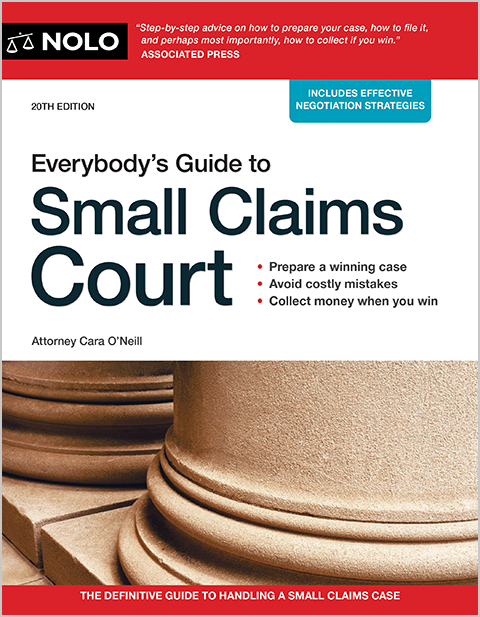State law helmet requirements for e-bike and bicycle riders, and how injury cases might be affected when helmet laws are violated.
It's a good idea to wear a helmet when riding a bicycle or electric bicycle for more reasons than just safety—when you don't wear one, you might be violating the law or hurting your chances of recovering for your injuries if you're involved in an accident.
This article explains:
- what you need to know about state and local bicycle and electric bicycle helmet laws, and
- how ignoring a helmet law can affect your potential for compensation if you're injured in a bicycle accident.
At the bottom of this article, you'll find a chart laying out each state's helmet requirements for bicycle and electric bicycle riders.
Bicycle Helmet Laws
No state currently requires helmets for adult bicyclists, but just under half of U.S. states require the use of helmets by riders under a certain age. And it's very important to note that the city or town where you live might have its own bicycle helmet ordinance that's stricter than the law at the state level.
For example, the state of Texas does not have a bicycle helmet law, but laws in a number of cities in Texas (including Austin, Dallas, Fort Worth, and Houston) require riders under the age of 18 to wear helmets. So, even though there's no statewide bicycle helmet law, minors riding in these areas will still need to wear a helmet.
Similarly, the state of Washington does not have a statewide bicycle helmet law, but many cities and counties in Washington require all riders—adults and minors—to wear helmets.
Wearing a bicycle helmet is always a good idea no matter what the law has to say, but bicycle helmet laws might also have an impact on an injury claim after a bicycle-car accident (more on this a little later).
Electric Bicycle Helmet Laws
What is considered an electric bicycle (e-bike) differs state-by-state. Some states haven't defined what an electric bicycle is, while others (such as California) have created a multiple-tier definition that breaks out e-bikes of different speeds and capabilities. States also refer to electric bicycles by many different terms, such as "motor-driven cycles," "low-speed electric bicycles," and "electric assisted bicycles." A minority of states do not differentiate an electric bike from a traditional bicycle. For more information about how your state regulates e-bikes, check out BikeBerry.com's state-by-state breakdown of electric bike laws.
Many states have laws requiring certain electric bicycle riders to wear helmets, and these rules often differ from those for bicycle riders. For example, Arkansas does not require helmet use by any bicycle rider, but does require helmet use by all electric bicycle riders under age 21. And, just like bicycle helmet laws, many cities and counties also have their own electric bicycle helmet laws.
If you live in a state that does not specifically regulate helmet use by electric bicycle, your best bet when riding an electric bicycle is to assume that the state's helmet laws for traditional bicycles (if any) apply.
Bicycle Accidents and Helmet Laws
In recent years, around 800 bicyclists have been killed in traffic accidents in the U.S., and approximately 48,000 have suffered injury. A large majority of bicycle-versus-vehicle accidents happen in urban areas, so it's no surprise that big cities often have the strictest helmet laws. But regardless of what state and local laws require where you live, it's a good idea to wear a helmet any time you're riding a bicycle or e-bike. There's simply no better way to protect yourself from head injury.
Violating a helmet law doesn't risk just your physical safety—it also risks your chance of getting compensation from an at-fault driver if you're injured in a collision with a vehicle. In many states, when a person ignores a law and then suffers the kind of injury that the law was enacted to prevent, the person is automatically deemed negligent.
This means that if you're injured in an e-bike or bicycle accident, and you weren't wearing a helmet when the law required you to do so, you could be found liable for your injuries—even when another person was at fault in the accident. So, in a personal injury lawsuit, your state's rules on shared fault could kick in to either reduce the amount of compensation you can receive from the at-fault driver, or eliminate your opportunity to collect anything at all. (Learn more about comparative and contributory negligence rules.)
In some cases, you might need to show that your head injury would have occurred even if you had been wearing a helmet, and that can be a tough thing to prove.
Purchasing and Fitting a Bicycle Helmet
All bicycle helmets sold in the U.S. should come with a sticker (usually somewhere inside the helmet) stating approval by the U.S. Consumer Product Safety Commission (CPSC). Different manufacturers take different approaches when it comes to things like concussion prevention, so one helmet's inner layer might be designed to perform differently from another. Bicycle helmets also come in different external shapes, but there's no consensus on which design is safest. The Bicycle Helmet Safety Institute has compiled a lot of useful data for consumers, including in-depth helmet ratings.
Just as important as finding the right helmet is making sure it fits, and that you're wearing it correctly. Here are some tips, from the National Highway Traffic Safety Administration (NHTSA):
- Try on more than one helmet and make sure you're properly adjusting the fit rings and/or the sizing pads.
- The helmet should sit low (one or two finger widths above the eyebrow) and fairly snug, and shouldn't rock on your head.
- The chin strap should also be fairly snug, so that only one or two fingers can fit under it where it rests on the skin.
- One way to check how well a helmet and chin strap fit is to open your mouth into a wide yawn. This should cause a properly-fitted helmet to pull down on your head.
Your Options If You've Been Injured in a Bicycle Accident
As touched on above, a bicycle accident can lead to an injury claim or other legal action, especially after a car-versus-bike collision. Putting aside the issue of helmet laws and whether or not the cyclist was wearing a helmet at the time of the accident, it's usually possible for an injured cyclist to file an insurance claim or lawsuit after a traffic accident, when the vehicle driver's liability for the crash is pretty clear.
As long as the at-fault driver has liability car insurance coverage, an injured bicyclist can typically file a "third party" car insurance claim with the driver's insurer. Most often these kinds of case will reach a settlement, but if the other side is disputing a key issue like fault or the legitimacy of the bicyclist's injuries, the matter could escalate to the point where a personal injury lawsuit is filed in court.
Recovery of compensation for a wide variety of losses ("damages" in legalese) is typically possible in an insurance claim or lawsuit, including:
- the bicyclist's medical bills arising from treatment for their accident injuries
- any income lost as a result of the accident
- the financial impact of any future limits on the bicyclist's ability to earn a living
- other out-of-pocket losses arising from the accident (damage to the bicycle, reimbursement of transportation costs, etc.)
- mental and physical pain and suffering caused by the crash, the bicyclist's injuries, necessary medical treatment, and
- other effects that the accident and resulting injuries have had on the bicyclist.
If it looks like someone else was clearly at fault for an accident that injured you, it might make sense to discuss your situation—and your options—with an experienced injury lawyer.
Bicycle Helmet Laws By State
Here's a list of the states with statewide bicycle and electric bicycle helmet laws, along with the ages of riders required to wear helmets. It's important to remember that even if your state does not have a statewide helmet law, there might be local laws (passed by your city, township, or county, for example) requiring helmet use in certain circumstances.
|
State |
Bicyclists Required to Wear Helmet |
e-Bicyclists Required to Wear Helmet |
|
Alabama |
Under 16 |
All ages |
|
Alaska |
No law |
No law |
|
Arizona |
No law |
No law |
|
Arkansas |
No law |
Under 21 |
|
California |
Under 18 |
All ages for "type 3" e-bikes; under 18 for other e-bikes |
|
Colorado |
No law |
Under 18 |
|
Connecticut |
Under 16 |
Under 16 |
|
Delaware |
Under 18 |
Under 18 |
|
District of Columbia |
Under 16 |
All ages |
|
Florida |
Under 16 |
Under 16 |
|
Georgia |
Under 16 |
All ages |
|
Hawaii |
Under 16 |
Under 16 |
|
Idaho |
No law |
No law |
|
Illinois |
No law |
No law |
|
Indiana |
No law |
Under 18 |
|
Iowa |
No law |
No law |
|
Kansas |
No law |
Under 18 |
|
Kentucky |
No law |
Under 21 |
|
Louisiana |
Under 12 |
All ages |
|
Maine |
Under 16 |
Under 16 |
|
Maryland |
Under 16 |
All ages |
|
Massachusetts |
Under 17 |
All ages |
|
Michigan |
No law |
Under 18 |
|
Minnesota |
No law |
No law |
|
Mississippi |
No law |
No law |
|
Missouri |
No law |
No law |
|
Montana |
No law |
No law |
|
Nebraska |
No law |
No law |
|
Nevada |
No law |
No law |
|
New Hampshire |
Under 16 |
Under 18 |
|
New Jersey |
Under 17 |
Under 17 |
|
New Mexico |
Under 18 |
No law |
|
New York |
Under 14 |
All ages |
|
North Carolina |
Under 16 |
No law |
|
North Dakota |
No law |
No law |
|
Ohio |
No law |
Under 18 |
|
Oklahoma |
No law |
No law |
|
Oregon |
Under 16 |
Under 16 |
|
Pennsylvania |
Under 12 |
No law |
|
Rhode Island |
Under 16 |
Under 16 |
|
South Carolina |
No law |
No law |
|
South Dakota |
No law |
No law |
|
Tennessee |
Under 16 |
All ages |
|
Texas |
No law |
No law |
|
Utah |
No law |
Under 21 |
|
Vermont |
No law |
No law |
|
Virginia |
No law |
All ages |
|
Washington |
No law |
No law |
|
West Virginia |
Under 15 |
All ages |
|
Wisconsin |
No law |
No law |
|
Wyoming |
No law |
No law |



